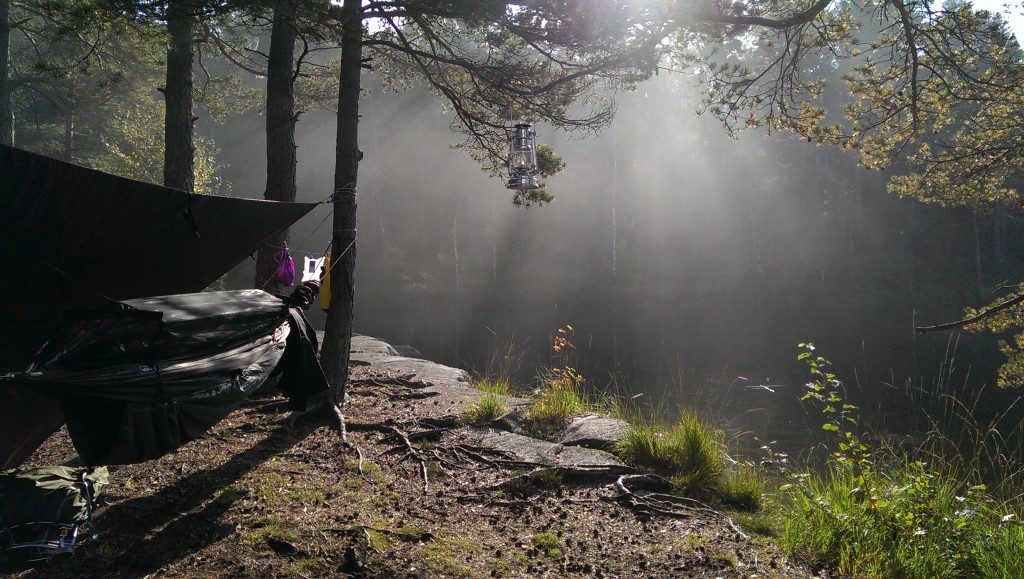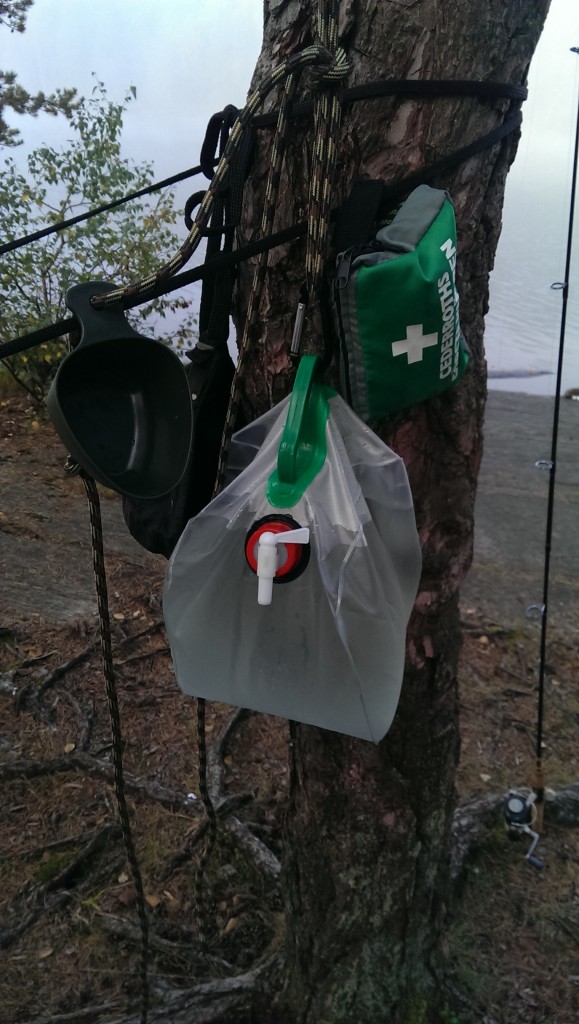So, you are considering hiking alone for the first time? What can you expect from that experience?
Well first of all, it will be an amazing and strong experience. There will be no distraction from other people (hopefully) and it is just you and nature, meaning you will have to face both in a quite different way. The experience of time too changes, especially if you don’t have a watch with you. In a few days your whole body clock will have reset itself to the passing of day and night. You will experience a clearer inner dialogue and you will learn to trust in your own skills and knowledge. Finally, you will also have the privilege of being intimately alone with the wild, an experience that can be quite spiritual, as you encounter wildlife.
However, especially the first few times hiking alone is not just a glorious experience with colibris tweeting and fluttering about and the intoxicating smell of lilacs. In fact, it can be quite tiresome, even terrifying. Here are some things you can expect, and some small advise on how to remedy it.
Discomfort
If you, like most people, are used to living comfortably in a city, then you are sure to find it both exhausting and uncomfortable. There is no way around it. First of all you will have to carry a whole lot of fairly heavy gear several miles to the camp site. For most of the time you won’t be sitting or lying on flat, soft surfaces. Mostly it will be uneven, hard, dirty and sometimes even wet.
Depending on how the weather turns out and what equipment you have brought along, you may also be exposed to cold, snow and rain or lots of sunlight and heat, further adding to the discomfort of the experience. You will be hurting and aching for sure. How much you care about that is down to your own mentality and expectations.
You can also expect to feel more tired than you believe you will be. Carrying stuff long distances over uneven ground and over long periods of time is exhausting and drains your stamina quickly. You might not sleep as well as you are used to either.
Exposure
As you are used to living in a safe environment, protected by roof and walls, you are bound to feel exposed & vulnerable. How much depends on your other experiences and mindset.
You will also feel trapped and alone, with no one to help you. There is no easy way out once you have traveled far and you are deep inside the wild and in the dark. At night you won’t usually see farther than your lantern or flashlight. You will also hear lots of unfamiliar noises; wind, water dripping, trees creaking and twigs & pine cones falling, even animals. You might even have small animals like rodents or birds, perhaps even a fox, visiting in camp, looking for food. For many that means little or no sleep, which quickly adds up after a few nights.
However, that’s both the beauty and horror of it: Not necessarily knowing quite were you are, what surrounds you and no quick and easy way out of it. It takes some getting used to. And the only way to do that is doing it. However, preparations help, which I will come back to.
Shit happens
Sooner or later something will break, either gear or you. In this kind of situation it is important to not let such things freak you out. As with everything, preparation is the key here. With preparation what could potentially cause you serious, and even life-threatening problems will only be a minor nuisance.
***
So what can you do?
Basically you should be well-equiped and have a good margin on all of it, especially for the most vital things. That gives you a sense of control in your own little personal space, wherever you are. Try to eliminate all those negative aspects; cold, hunger, discomfort. Learn skills beforehand, preferably from someone else, but books and video work too. Be wise in what you study though. There is so much crap out there that can get you in serious trouble, like Bear Grylls, Dual Survival and various similar “bushcraft” tv shows. Ray Mears is a good name you can trust.
Here are some of the things I normally bring with me.
Cold
A sleeping bag
Trying to sleep while freezing can be very hard and demoralizing. What temperature is comfortable for you is very individual and depends on gender, fitness and how well fed you are. Also keep in mind that the weather might change and it is better to be too warm than too cold as it is easier to regulate. Make sure that your sleeping bag can take more cold than expected.
To play on the safe side you can also bring some small handwarmers for carbon rods or emercency chemical heat packs. Easy to carry and, in the latter case, use and place inside of a sleeping bag if needed. Single-use heating pads can last up to 24 hours, although 7-8 hours is more common. And they come in various sizes, both for torso, feet and hands.
Others heat up a bottle of water and put it in their sleeping bag. Just make absolutely sure that it doesn’t leak water. Also, be careful with hot water so you don’t burn yourself. Put the bottle in a thick sock.
Quick Energy & Attitude
Sweets and salty things can do wonders for both giving you a constant boost of energy, but also to help you keep a positive attitude. Things I like to bring with me are
Chocolate bars with nuts, & fruit
Cocoa with powdered milk
Nuts, almonds & dried fruit
Comfort
A sleeping hammock and a tarp
… is easier and more comfortable than a larger tent, although if hard ground is not a problem, a small one-man-tent can be good too.
Keep in mind that the larger the surface area of your choice, the more good available space you need to find in the woods. A hammock just needs two trees at a suitable distance, and the woods are full of… trees.

The tarp is easy in that it offers you and your gear shelter without the need to have to open up and crouch down into your tent all the time. The hammock is very comfortable and contrarily to what many who haven’t tried them assume, you can lie almost straight in them, if you just make sure to lie diagonally. Another advantage is that you get off of that cold ground, and with an attached underblanket and incorporated mosquito net you are very comfortable indeed.

Small wood burners
… make for easy and small campfires that you can use both for warmth and cooking, using just twigs and pine cones. They are quite effective with an ingenious construction that causes a jet flame of wood gas, making it possible to boil water in a matter of minutes using just a handful of small twigs or pine cones. Brilliant, and much more cozy than any gas burner! It burns fast though, so make sure to have firewood prepared.
Firewood and tinder
However, keep in mind that you need dry tinder and wood to be able to use wood burners. That is usually not a problem and you can also always collect extra tinder and bring back home with you for the next trip, or make a short trip in advance collecting some if you want to make absolutely sure. Strip some of the white surface off of birch trees and you have excellent tinder for starting fire.
Alternately you can bring some prefabricated stuff and there are plenty of such options for purchase.
Clothes
You can spend a fortune on high-end, brand hiking clothes and they are usually high quality too. No doubt about that. However, you can also get quite good military surplus designed for very rough conditions for a fraction of the cost. Good combat trousers and a field smock is made for tough use in rugged conditions. It is also normally quite fireproof, which plastic fabrics like fleece just aren’t.
Both during the day and night it is good to have some extra, warm long underwear, sweater & socks for when it gets unexpectedly cold. Wool is the best since it will keep you warm even when wet.
A scarf & cap
Make sure that you don’t lose heat at your neck or scalp where most heat leaves your body. They can also help protect from sunlight. I commonly wear a shemagh since it is so versatile.
Gloves
Gloves help protect both against cold, but also your skin when you need to work with wood and brush. Keep in mind that small cuts and splinters can get easily infected when your hands are dirty.
Boots
Insulated boots with layers of fabrics is the most common, but can be hell if they get wet as they take days to get dry again. For that reason non-insulated boots with extra socks are better. It is what I wore in the military, summer and winter alike and it works beautifully. Today I wear Lundhags Forest Boots with Swedish military socks and they will probably survive me. Completely water proof, good and solid. These are basically pass-them-on-to-the-next-generation boots, that you wear 25 years or more, provided that you care for them properly.
Rain clothes
Of course. Being wet and cold sucks. Bring light rain clothes so it doesn’t add a lot to your carry weight.
Insect repellent
This is not the most important thing, but it is just a small and light piece of equipment and it will certainly make your life easier in places where there are a lot of mosquitos.
Food & Water
 Food is naturally one of the most important things to your comfort. Make sure to bring a bit more food than you need and choose food with strong flavour and saltiness. Always have a good margin on it all.
Food is naturally one of the most important things to your comfort. Make sure to bring a bit more food than you need and choose food with strong flavour and saltiness. Always have a good margin on it all.
Some of the things I like to bring with me are:
Minestrone soup. Lots of flavours. Salty and rich.
Smoked meat. Love elk and reindeer.
Bread. The heavy and compact type.
Hard cheese. Purmer is a favourite. Cheese also contains far more proteins than meat.
Cheese spread. Instead of butter.
A water filter & expanding water container
Carrying water long distances is no fun. Much better to just get water from a stream or lake. However, to avoid risk of poisoning and sickness, you should filter it using a good water filter. This is one of the first things I set up and in just a few minutes I have ten litres of pure water that tastes great.
A water bottle or canteen
This I use only for drinking out of when walking to and from my camp site.
A sip of whisky
… before going to bed can be nice. However, if you consider bringing alcohol in any form, then make damn sure to control yourself. Using sharp knives and axes even just the slightest intoxicated could get you in very serious troubles, costing you a finger or more.
Don’t drink alcohol to get warm! While it is true that you feel warmer, you will actually be lowering your body temperature.
Drinking cup and eating utensils. A dishing sponge
Some like to eat straight out of their cooking pots and that is fine. Sometimes I do, sometimes I don’t. I always keep a drinking cup near the water container so I can get a quick drink.
First Aid kit
 This is a given. You need to be able to fix injuries well enough to get back, in case you are hurt.
This is a given. You need to be able to fix injuries well enough to get back, in case you are hurt.
Duct tape
Duct tape is invaluable for field repairs. With it you can repair e.g. broken backpacks, tents and assorted gear.
Detailed regional maps & compass
Don’t be cocky. You may well get lost if you stray off the path just a little bit. And even if you don’t, you may get lost as you enter a sidepath without noticing it. Therefore, make sure you always bring detailed maps and a compass, although also bear in mind that maps and reality are not the same and things on a map may no longer exist in he real world, and vice versa. Be careful and smart.
Matches kept dry, a good lighter
Without fire your time in the woods will suck. Don’t rely on just one single lighter. Make sure to bring several options. They won’t take much space or weigh much. I bring my Zippo and a canister of fuel for it. And matches and firesteel.
A kerosene lantern & kerosene
I much prefer knowing exactly how much fuel I have left for my fire & light. Batteries can fail and there is no simple way of telling how much energy is left in them. Also I am an old traditional fart. That said, this takes up a lot of space in a pack so it is a matter of priority and preference.
Tools & gear
Flashlights
I like to bring two small maglites. One for backup. I also use one of these when reading before I sleep.
Two good knives
I bring two knives of different sizes, one for finer chores and one for bigger things. Both serve as backup for the other. I prefer stainless for the easy maintenance and since I use them for both food and camp preparation, meaning I can’t use most oils to maintain non-stainless knives. I prefer Scandi-grind on most knives, for ease of sharpening. The bigger knife is used for chopping stuff, splitting wood through batoning using another piece of wood, as well as for slicing bread, and the smaller knife for eating, food preparation, cutting stuff, making feather sticks and other similar camp chores.
A good bit of rope
Rope can be used for so many things and the more you go out, the more you will discover. I like to sling rope over a branch and hang my water container from it, making it easy to use it one-handed, as seen in the picture above.
Hygiene
Good hygiene is good for your own health, since preparing food when you are all dirty can be very bad for you. Just as importantly, as most of us are used to being clean, it is an important part of feeling comfortable. You will be dirty enough anyways, especially if taking a swim is out of the question for the season.
So bring:
A towel, which can double as a pillow when dried
A container of liquid soap for cleaning yourself
Tooth brush & paste
Soap for dishing
Toilet paper in a coffee can or plastic bag. Yes, this is one of your most important pieces of equipment. Life sucks without dry toilet paper.
Trash bag
Always make sure to bring everything you brought with you back home. Never leave junk in the woods.
What else?
Last but certainly not least; also always bring a good book for when you are bored, can’t sleep or need to distract yourself. This is a mental life saver for many.
***
Final advice
Quite importantly: Never go off on a solo hike without telling someone you trust exactly where you are going, with possible alternative locations, what route you will take and then follow that plan. Show them on a map, write it down and tell them when you will be back. Bring a phone with you for emergencies, but make sure to turn it off and preserve battery, only using it for that purpose. A bit more low-tech, but in case of real emergency a good whistle like the Jetscream can be good to have with you.
Have fun and thanks for reading!




